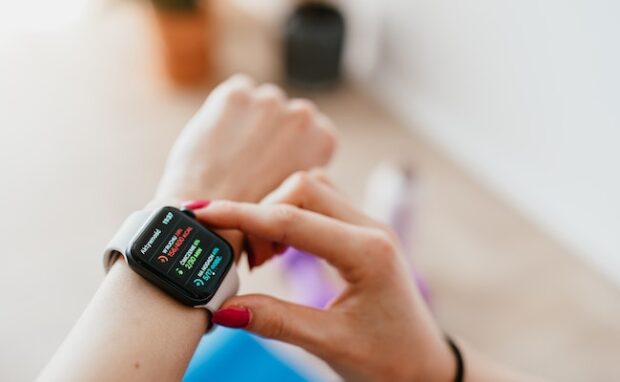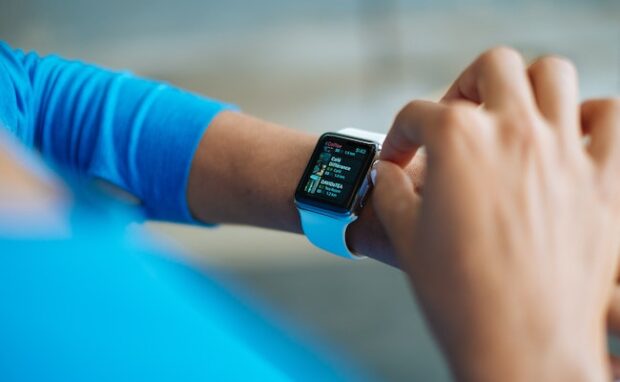How to clean your smartwatch properly
Florida scientists discovered smartwatches can become hotbeds for bacterial infection. These microbes could cause severe diseases like urinary tract and blood-related infections. Also, the Daily Mail reports Professor Nigel McMillan claims they can become 30 times dirtier than a toilet seat! Hence, a clean smartwatch can help you avoid severe diseases.
Many rely on smart timepieces to encourage themselves to start exercise routines. Meanwhile, athletes and fitness enthusiasts use them to reach specific objectives. However, you must ensure your smartwatch is always sanitary to maintain health. Fortunately, you can disinfect your digital tracker quickly with common household items.
This article will explain how to disinfect your smart tracker properly, depending on its materials. Later, I will discuss what these US-based scientists discovered about smartwatch cleanliness.
How to clean your smartwatch
The scientists studied how to disinfect a smart timepiece properly. They tested three household products: Lysol Disinfectant Spray, 70% Ethanol, and apple cider vinegar.
They found the first two only needed 30 seconds to reduce the bacteria count dramatically. In contrast, the vinegar needed two minutes to achieve similar results.
You could follow these tips or your smartwatch brand’s recommendations. For example, Apple recommends cleaning the Apple Watch with 70% isopropyl alcohol wipes, 75% ethyl alcohol wipes, or Clorox disinfectant wipes for specific band types.
Alternatively, you can do a thorough cleaning by disassembling your smartwatch’s face from its straps. Then, clean the screen with these steps:
- Wipe the screen with a microfiber cloth.
- If your smartwatch is waterproof, you can moisten the fabric with a lukewarm mixture of water and a tiny amount of soap.
- If you still don’t have a clean smartwatch, dab your cloth in white vinegar and a half cup of water. However, you must rub your screen gently to avoid scratching it.
You may also like: Meta is working on a smartwatch
Afterward, you must clean the straps. You need different tools and cleaning agents depending on the material of your smartwatch band. Use these for the following:
- Leather: Use a leather cleaner and conditioner to ensure you do not tarnish or bleach its finish.
- Silicone: PCMag recommends using liquid soap heavily diluted in water.
- Metal: Use a few drops of dishwashing soap for most metals. However, a jewelry cleaning solution is ideal for gold straps.
Next, clean every nook and cranny of your smartwatch. Use a Q-tip or cotton swab for hard-to-reach areas. Also, use a toothpick to pry grime out of tinier spots.
What did scientists discover about smartwatches?
Florida Atlantic University researchers acknowledge smartwatches have become a staple of daily life. Hence, they studied how sanitary these devices are.
They analyzed smartwatch bands made of rubber, fabrics, leather, plastic, and metal worn by different professions. Their sample included firefighters, veterinary technicians, drivers, and desk workers.
They found nearly 95% of smartwatch straps have numerous bacteria. Also, the ones with rubber and plastic straps tend to be the most contaminated.
Metal ones with gold and silver had the fewest microbes. Moreover, a person’s profession significantly affects the severity of pathogens on their smart timepieces.
For example, veterinary experts and gymgoers had the highest concentration of various pathogens on their straps. Contrary to popular belief, antibacterial bands could intensify the types of bacteria on a smartwatch.
Florida Atlantic University senior researcher Nwadiuto Esiobu told Digital Trends, “This is a double-edged sword. He added, Antibacterial anything will provide a short-term kill but will train resident and transient bacteria on resistance to drugs and antibiotics.”
The Florida researchers discovered Pseudomonads, Enterobacteriaceae, and Staphylococci were the most common pathogens on smartwatches. The latter induces blood-related infections that cost the US $2 billion in annual medical expenses.
You may also like: Huawei Watch 4 checks your blood sugar
Another bacterium found is S.aureus or Staphylococcus aureus, which can cause blood clots, infective endocarditis, and fatal organ failure. Moreover, the scientists found Pseudomonas aeuginosa in rubber and plastic straps, which causes urinary tract infections.
The most troublesome pathogen they spotted is Enterobacteria or Escherichia Coli, which causes fecal-oral infections. Lastly, the scientists concluded metallic straps are the most sanitary option.
“Metals inhibit the enzymes on the membranes of bacteria … . So most persisting bacteria will die over time,” Esiobu explained. “So most persisting bacteria will die over time. “ They are usually the most expensive option, but they provide safety worth the money.
Conclusion
Scientists found most smartwatches are filled with bacteria that can bring debilitating diseases. Consequently, you must ensure you always have a clean smartwatch.
Use the tips above to clean your fitness tracker, or use your manufacturer’s tips. Also, ensure you scrub your devices properly to avoid damaging them.
After all, smartwatches continue to improve, thanks to constant online updates. Learn how to use the latest features and learn about other digital tips at Inquirer Tech.
Frequently asked questions about cleaning smartwatches
How often should I clean my smartwatches?
It’s up to you how often you will clean your smartwatch. If you often perform physical activities while wearing them, daily cleaning is ideal. On the other hand, you may settle for a weekly clean if you’re often indoors. Nevertheless, wipe away stains immediately to prevent bacterial growth on your device.
What happens if I don’t clean my smartwatches?
Dirty smartwatches could look more raggedy than clean ones. Also, stains and bacterium could deteriorate their colors and produce grime and odors. Worse, they could promote the growth of harmful pathogens that cause deadly diseases. Professor Nigel McMillan said they could become 30 times dirtier than toilet seats if left unchecked.
Can I use antibacterial straps instead?
Antibacterial straps can prevent short-term bacterial growth. However, pathogens may grow accustomed to the special material, becoming capable of causing harmful health conditions. You can use antibacterial straps, but you must clean them regularly. Use the tips above or your brand’s recommendations to do it properly.

